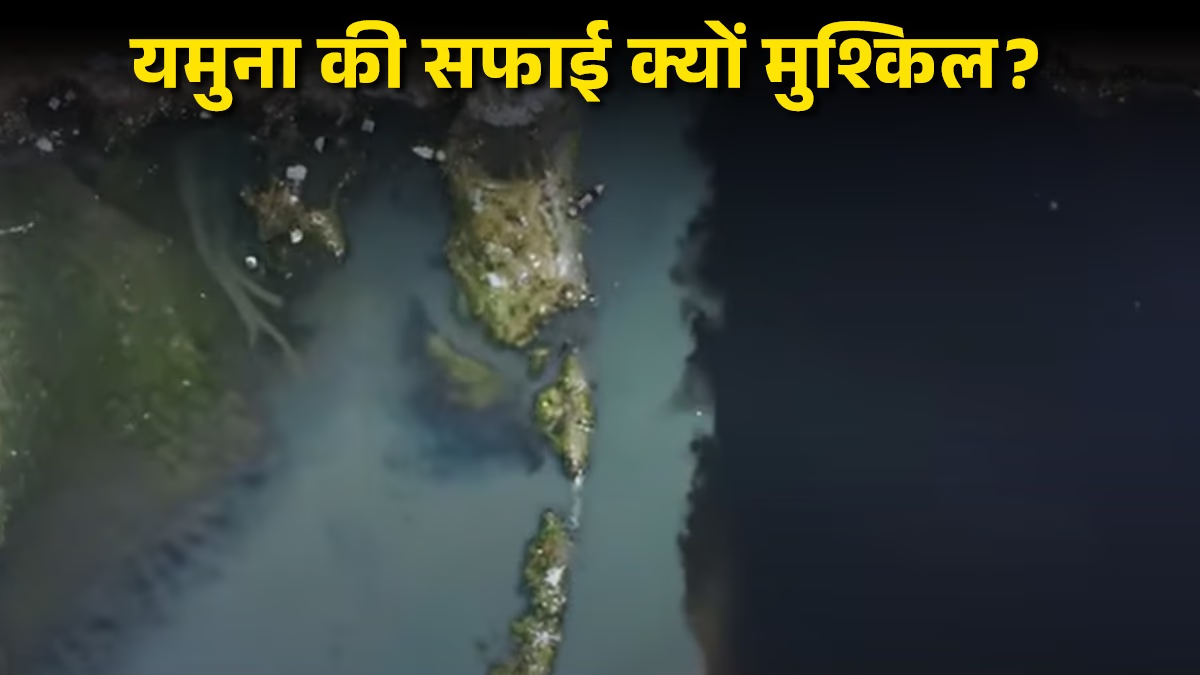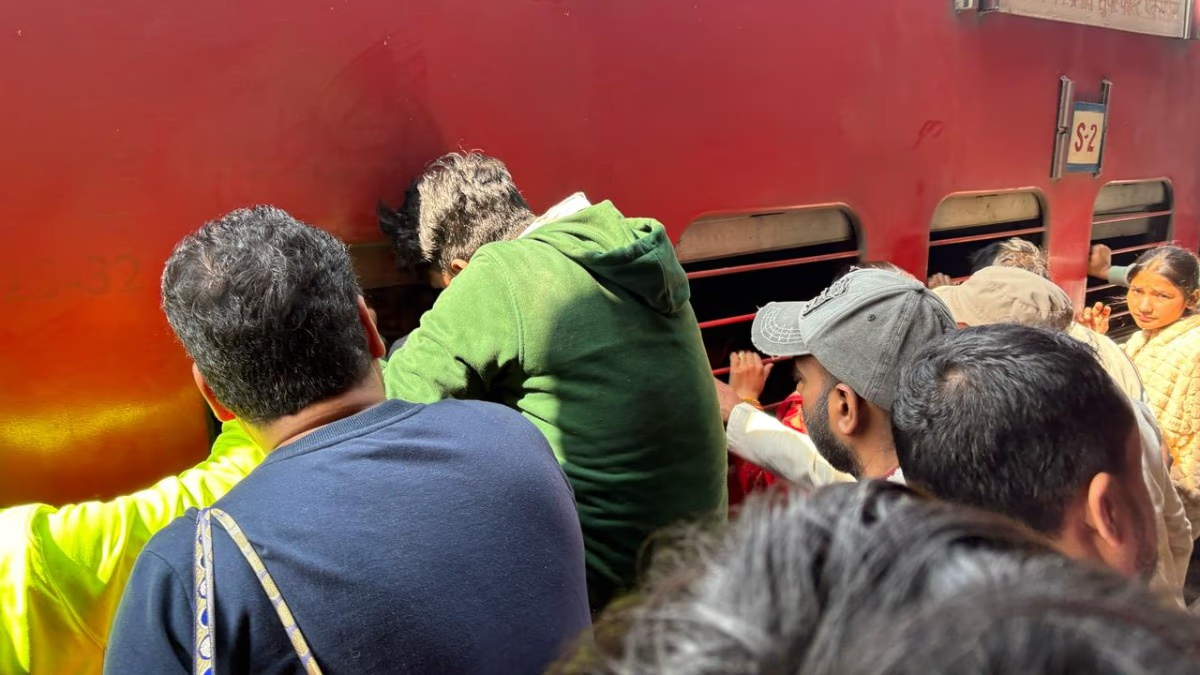Delhi has witnessed elections, yet the Yamuna River's cleanup remains a mere topic. The river's health is poor, and everyone knows it. Political parties have used the Yamuna as a ladder to power, yet have failed to turn back and look at it. The river contributes to more than 70% of the water supply to Delhi, India's capital. In name only, the Yamuna Action Plan was established 32 years ago, comprising three phases, but cleanliness remained elusive.
Understand the Yamuna Action Plan's targets in 7 points!
The Yamuna River courses through 1376 km, from Yamunotri to Sangam, with a stop in Delhi. In Delhi, the river covers 52 kilometers, 0.4% of its total course. Up to Wazirabad, about 26 km, the river stays clean as no drainage falls here. However, moving forward, pollution heightens. From Najafgarh to Okhla, 26 drains discharge into Yamuna. Delhi's ten sewer treatment plants feed into the Najafgarh Drain (Sahibi River).
Obstacles in Yamuna's Path to Cleanliness...
Water from our homes is channeled through sewers to pumping houses, then to sewer treatment plants. Post-treatment, it's diverted into drains, eventually joining the Yamuna. Experts reveal 800 MGD of sewage is generated daily in Delhi, translating to 35 billion liters. Had this water been treated before joining the Yamuna, harm would be considerably reduced.
Today, the Yamuna is touted as one of the country's most polluted rivers, reduced to a drain in parts of Delhi. It’s enveloped in dense foam, with negligible oxygen remaining. Ninety percent of Delhi's domestic wastewater flows into it.
31 Years of Mere Politics
For decades, Yamuna River has been the center of political tug-of-war. While billions were spent on clean-up initiatives, the river never truly received the attention needed, worsening its state. Long-time residents reminisce about the pre-1984 clear waters of the Yamuna, contrasting with today's reluctancy to even sip its waters.
1. When did the Yamuna Action Plan start?
The first phase of the Yamuna Action Plan was launched in 1993, followed by a second in 2003, and a third in 2012, aimed at freeing the river of pollution. Under a bilateral project between India and Japan, Japan's government via Japan Bank for International Cooperation (JBIC) supported this plan, executed by India's Ministry of Environment and Forests.
2. What was the plan?
The plan emphasized constructing new sewage treatment plants, extending the capacity of existing ones, particularly in Delhi and Agra. It also involved rehabilitating sewers to enhance hygiene conditions. Yet, critics noted minimal impact on the Yamuna, as over 200 drainage lines continue feeding into it. Environmental experts point to thick foam on the river caused by pollutants like ammonia and phosphates, potentially instigating respiratory and skin illnesses.
Sewage treatment plants were intended to cleanse wastewater flowing into the Yamuna. Major drains had to be treated or diverted to prevent waste from descending into twenty-two large drains, mainly in Delhi. Industrial waste control was also critical, treating factory discharges before release. Solid waste management was aimed at barring trash and plastic from entering the river. Biodiversity restoration focused on planting trees along banks, preserving aquatic life, with community participation encouraging local consciousness against polluting the river. Without obstructing mountain water flow into the Yamuna, maintaining water flow was essential for cleanliness.
3. How did the Yamuna Action Plan's journey unfold?
The first phase transpired from 1993 to 2003, focusing on rudimentary cleaning endeavors. By 2002, about twelve sewage treatment plants were established. Partial industrial waste control was achieved. The second phase, running from 2003 to 2013, focused on cleaning efforts in Delhi, Uttar Pradesh, and Haryana. Although plants were constructed, waste continued flowing into the river. Efforts to maintain clean water flow in the Yamuna faltered. The third phase extended from 2013 to 2024, under the 'Namami Gange' scheme, with Delhi incurring expenses exceeding ₹10,000 crores, yet pollution persisted. By 2024, 80% of the river's pollutants still stem from Delhi.
4. What became of the Yamuna Action Plan?
Despite 32 years, the Yamuna Action Plan produced lackluster results. Ninety percent of pollution originates from Delhi, with only 6 out of 22 drains treated; the remainder still discharge into the river. Sewage treatment plant capacity stood at 3,800 MLD, yet Delhi discharged over 6,000 MLD of waste. Controlling industrial and domestic waste achieved limited success. Although the action plan aimed for a clean Yamuna, 32 years on, the river remains filthy in Delhi. Experts affirm that until cooperation among government, industry, and the public materializes, the problem will persist.
5. Major Hurdles in Yamuna's Cleanup
- Excessive sewage and wastewater:
Cities like Delhi and Noida discharge untreated sewage directly into the river.
- Industrial waste:
Chemical factories release hazardous waste into the Yamuna.
- Illegal constructions and urbanization:
Haphazard building and waste dumping on riverbanks aggravate pollution.
- Poor drainage system:
Treatment of 22 major drains into the Yamuna is inefficient.
- Lack of coordination:
Government and local bodies don't operate effectively together.
- Public awareness is lacking:
People continue to throw worship items, plastic, and waste into the river.
- Climate change and water flow:
Except during monsoons, clean water flow remains an issue.
6. Government's action plans?
The Delhi government set a target to cleanse the Yamuna by 2025, claiming a five-point plan. Yet, the river remains polluted. The government proposed creating wastewater treatment zones at nine locations on the Najafgarh, Supplementary, and Shahdara drains, employing in-situ treatment methods, floating booms, weirs, aeration devices, and floating wetlands. Additionally, chemical dosing would reduce phosphates, while aeration devices would boost oxygen solubility for natural purification.
7. How can cleansing be achieved? Experts' suggestions
Experts advocate for stricter regulations on waste disposal from industries and enhanced waste management, especially during high-pollution times like during rains and festivals. Treated sewage should be the only type entering the Yamuna. Untreated sewage containing surfactants, chemicals found in detergents and industrial waste discharges, significantly contribute to contamination, as surfactants reduce water's surface tension, fostering foam formation.




